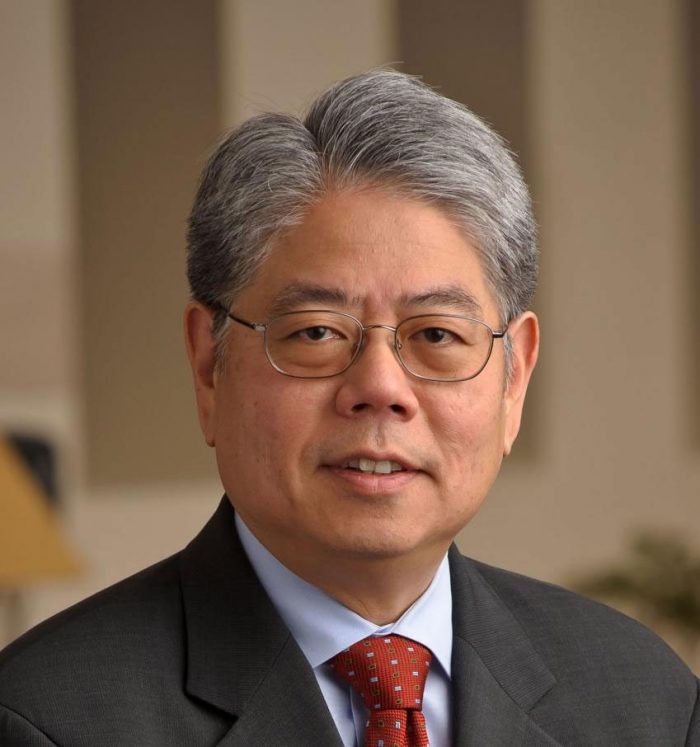The butterflies that color backyards are welcome companions for spring and summer. The ones that flutter towards the upper part of people’s chests can be discomforting and disconcerting.
In an effort to spread the word about the most common form of heart arrhythmia amid American Heart Month, the Stony Brook Heart Institute recently held a public discussion of Atrial fibrillation, or A-fib.
Caused by a host of factors, including diabetes, chronic high blood pressure, and advanced age, among others, A-fib can increase the risk of significant long-term health problems, including strokes.
In atrial fibrillation, the heart struggles with mechanical squeezing in the top chamber, or the atrium. Blood doesn’t leave the top part of the heart completely and it can pool and cause clots that break off and cause strokes.
Dr. Eric Rashba, who led the call and is the director of the Heart Rhythm Center at Stony Brook Heart Institute, said in an interview that A-fib is becoming increasingly prevalent.
A-fib “continues to go up rapidly as the population ages,” Rashba said. It occurs in about 10% of the population over 65. “As the population ages, we’ll see more of it.”
The Centers for Disease Control and Prevention estimates that 12.1 million people in the United States will have A-fib over the next decade.
As with many health-related issues, doctors advised residents to try to catch any signs of A-fib early, which improves the likely success of remedies like drugs and surgery.
“We prefer to intervene as early as possible in the course of A-fib,” Dr. Ibraham Almasry, cardiac electrophysiologist at the Stony Brook Heart Institute, said during a call with three other doctors. “The triggers tend to be more discreet and localized and we can target them more effectively.”
Different patients have different levels of awareness of A-fib as it’s occurring.
“Every single patient is different,” said Dr. Roger Ran, cardiac electrophysiologist at the Stony Brook Heart Institute. Some people feel an extra beat and could be “incredibly symptomatic,” while others have fatigue, shortness of breath, chest discomfort, and dizziness.
Still other patients “don’t know they are in it and could be in A-fib all the time.”
Doctors on the call described several monitoring options to test for A-fib.
Dr. Abhijeet Singh, who is also a cardiac electrophysiologist at the Stony Brook Heart Institute, described how the technology to evaluate arrhythmias has improved over the last 20 years.
“People used to wear big devices around their necks,” Singh said on the call, which included about 150 people. “Now, the technology has advanced” and patients can wear comfortable patches for up to 14 days, which record every single heartbeat and allow people to signal when they have symptoms.
Patients can also use an extended holter monitor, which allows doctors to track their heartbeat for up to 30 days, while some patients receive implantable recorders, which doctors insert under the skin during a five-minute procedure. The battery life for those is 4.5 years.
Additionally, some phones have apps that record heartbeats that patients can send by email, Singh said. “We have come a long way in a few years.”
Dr. Roger Fan, a cardiac electrophysiologist at the Stony Brook Heart Institute, added that all these technologies mean that “we are virtually guaranteed to get to the bottom” of any symptoms.
Drugs vs. surgery
Doctors offer patients with confirmed cases of A-fib two primary treatment options: drugs or surgery.
The surgical procedure is called an ablation and involves entering the body through veins in the groin and freezing or burning small areas that are interfering with the heart’s normal rhythm. The procedure breaks up the electrical signals in irregular heartbeats.
Performed under general anesthetic, the procedure generally takes two to three hours. Patients can return home the same day as the operation, Rashba said.
As with any surgery, an ablation has some risks, such as stroke or heart attack, which Rashba said are “very rare” and occur in fewer than one percent of the cases. Additionally, patients may have groin complications, although that, too, has declined as doctors have used ultrasound to visualize the blood vessels.
In extremely rare occasions, some patients also have damage to the esophagus behind the heart, said Rashba, who is also a professor of medicine.
For patients experiencing symptoms like A-fib, doctors recommended a trip to the emergency room, at least the first time.
“If it’s not going away, one, you can reassure yourself, two, you can get treatment, and three, you can get a diagnosis quickly,” said Almasry.
The Stony Brook doctors said choosing the best treatment option depends on the patient.
“Everybody has different manifestations of their A-fib,” said Fan.
Among other questions, doctors consider how dangerous the A-fib is for the patients, how severe the symptoms are, and how much they affect the quality of life.
Doctors urged residents to make the kind of healthy lifestyle choices that keep other systems functioning effectively. Almasry cited a direct correlation between obesity and A-fib.
Reducing body weight by 10%, while keeping the weight off, can reduce the likelihood of A-fib recurrence, he said.










